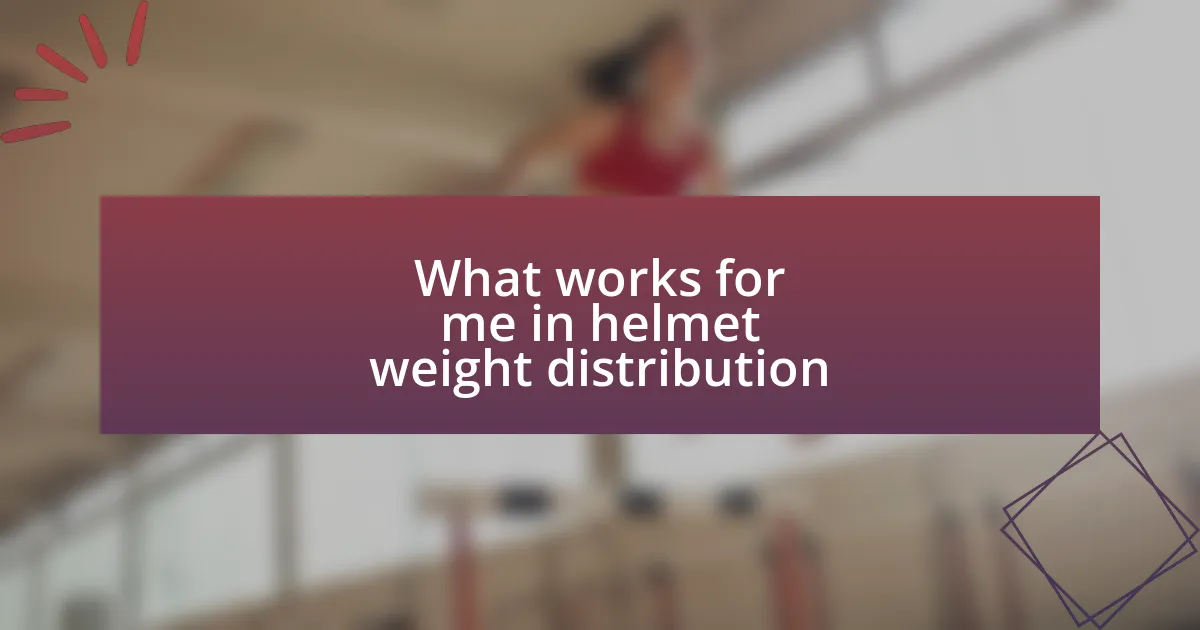Key takeaways:
- Understand helmet safety standards through certifications like CPSC and ASTM to ensure protection.
- Fit and comfort are crucial; a helmet should feel snug, with good ventilation and no pressure points.
- Different biking styles require specific helmet features, such as aerodynamics for road biking or full-face design for mountain biking.
- Choose a reputable brand with safety certifications to enhance your biking experience and peace of mind.
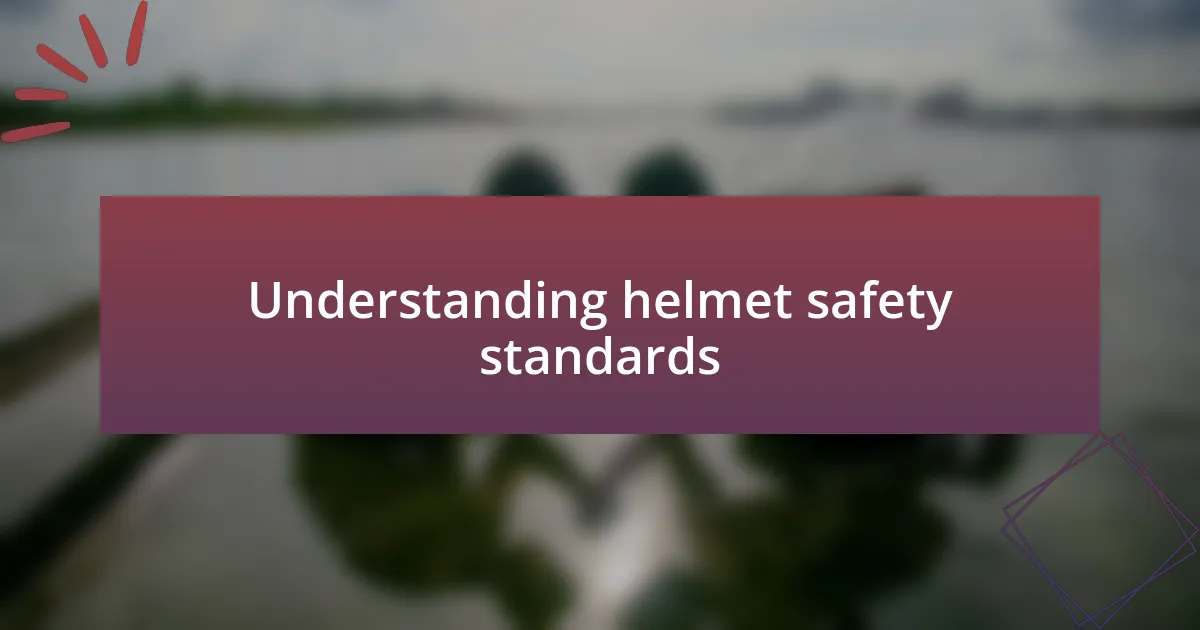
Understanding helmet safety standards
When it comes to helmet safety standards, it’s crucial to understand what they actually mean. I remember the first time I stood in a bike shop, overwhelmed by the options. Then I learned that certifications like CPSC (Consumer Product Safety Commission) and ASTM (American Society for Testing and Materials) indicate that a helmet has passed rigorous impact tests. Knowing this made me feel more confident about my choices.
Reading those safety labels started to feel personal. Each sticker represented a commitment to protecting my head from potential harm. I often think about it—how much is my safety worth? The truth is, a helmet that meets these standards can significantly reduce the risk of serious injuries in an accident.
I also discovered that not all helmets are created equal even within the same standard. For example, the fit and retention system play a vital role in how well a helmet can protect you during a crash. This realization pushed me to try on several helmets before deciding. It’s such a simple step, yet it makes a world of difference in ensuring that I’m adequately protected.

Identifying your biking needs
To identify your biking needs, consider the type of biking you plan to do. I remember the excitement of gearing up for my first long-distance ride; it pushed me to evaluate what I truly needed in a helmet. Are you a casual commuter, an off-road adventurer, or a road cycling enthusiast? Each category may require different features in a helmet, such as aerodynamics or additional ventilation for comfort.
Here are some examples to help guide your decision:
- Commuting: Look for lightweight and stylish designs that allow for easy wear in everyday situations.
- Mountain Biking: A full-face helmet can provide extra protection for challenging trails.
- Road Biking: Consider helmets with an aerodynamic design and effective airflow for longer rides.
- Kids: Ensure a secure fit and colorful design to make helmet-wearing appealing for little ones.
Understanding your biking style not only narrows your choices but also aligns your purchase with your personal biking experience. It’s a vital step that can make a considerable difference in both safety and enjoyment on the road or trail.
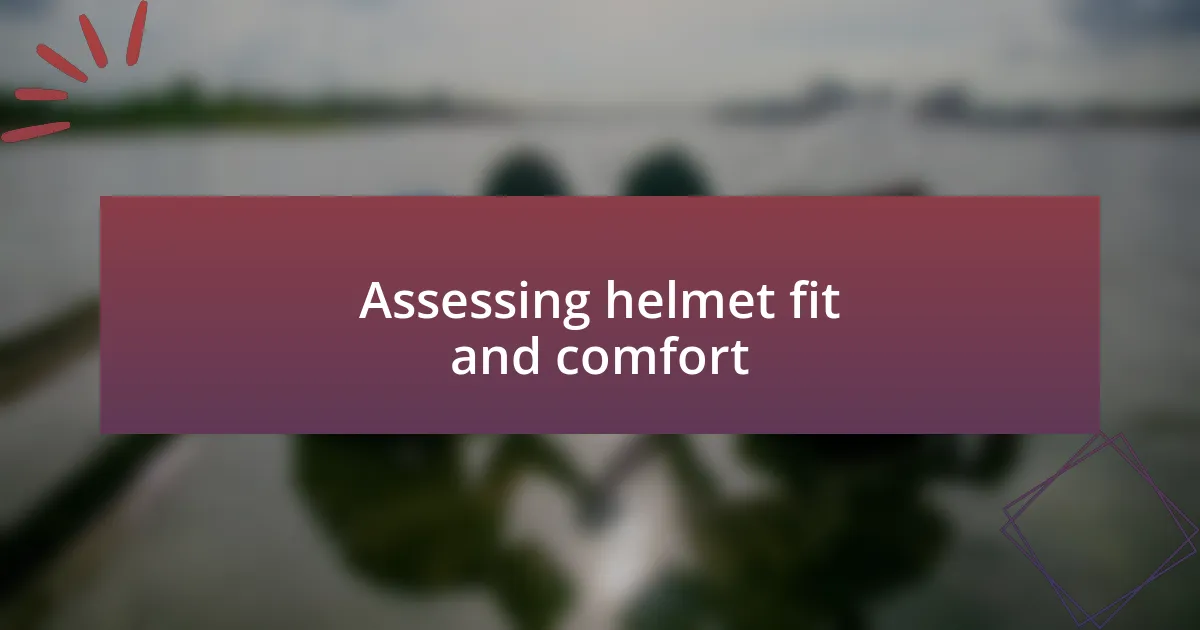
Assessing helmet fit and comfort
When assessing helmet fit, I always follow the rule of thumb: it should feel snug but not overly tight. I once tried on a helmet that was a bit loose, and I instantly felt uneasy, imagining how it might shift during a ride. Finding the right fit means checking that the helmet sits level on your head, covering your forehead without obstructing your vision. Trust me, a helmet that moves around can distract you from fully enjoying your ride.
Comfort goes beyond just the fit; it involves material and padding. I vividly recall wearing a particular helmet on a hot day, and the discomfort from inadequate ventilation led me to cut my ride short. A good helmet should have moisture-wicking liners and airflow channels that keep your head cool. Pay attention to these details in order to ensure long rides remain enjoyable and safe.
Finally, I recommend trying on different brands, as each may have a unique feel. My experience has shown that a brand known for its snugger fit might not work well for someone with a rounder head shape. Take the time to wear each helmet for a few minutes before making a decision. This will help you gauge how it feels during a longer ride, ultimately influencing your comfort and safety out on the road.
| Fit Assessment Criteria | Comfort Features |
|---|---|
| Snug Fit (Doesn’t move during rides) | Moisture-Wicking Liner (Keeps sweat away) |
| No Pressure Points (Feels good on the head) | Aerodynamic Shape (Less wind resistance) |
| Correct Positioning (Covers forehead without blocking eyes) | Ventilation (Airflow channels to keep cool) |
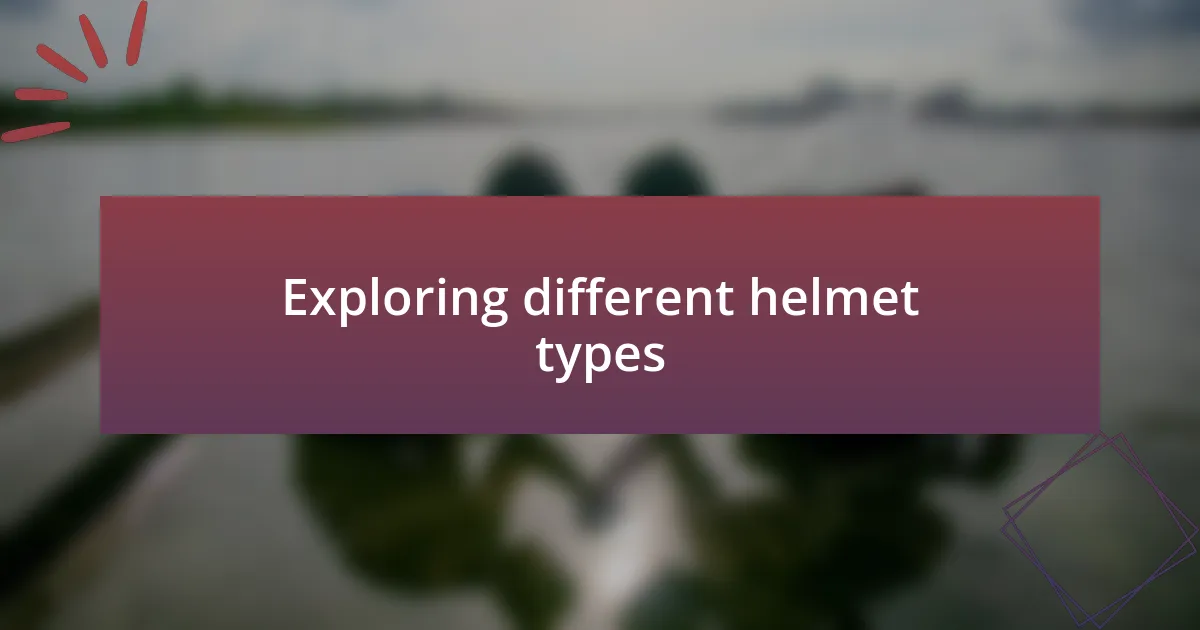
Exploring different helmet types
When exploring different helmet types, I’m always surprised by how many options are out there. I initially thought there was just one kind—until I discovered the world of road, mountain, and commuter helmets. Each type serves specific needs; for instance, mountain helmets often come with visors for sun protection, while road helmets focus on aerodynamics. Isn’t it fascinating how a small design tweak can significantly impact performance?
I remember trying on a mountain biking helmet that boasted excellent ventilation but felt bulkier than I expected. Initially, I was drawn to its robust look, thinking it would offer more protection. However, once I wore it for a bit, I realized the bulkiness could potentially hinder my agility on the trails. The balance of protection and weight is something every cyclist should consider when selecting a helmet type.
Lastly, I found myself intrigued by the newer smart helmets with built-in Bluetooth and lights. While they seemed like a fun gadget at first, I had to ask myself: Did they enhance safety, or were they just a trendy option? After a close inspection, I decided that while they offered interesting features, traditional helmets still had the edge in terms of lightweight design and simplicity. This gave me a lot to think about when deciding on what I really wanted from a helmet.
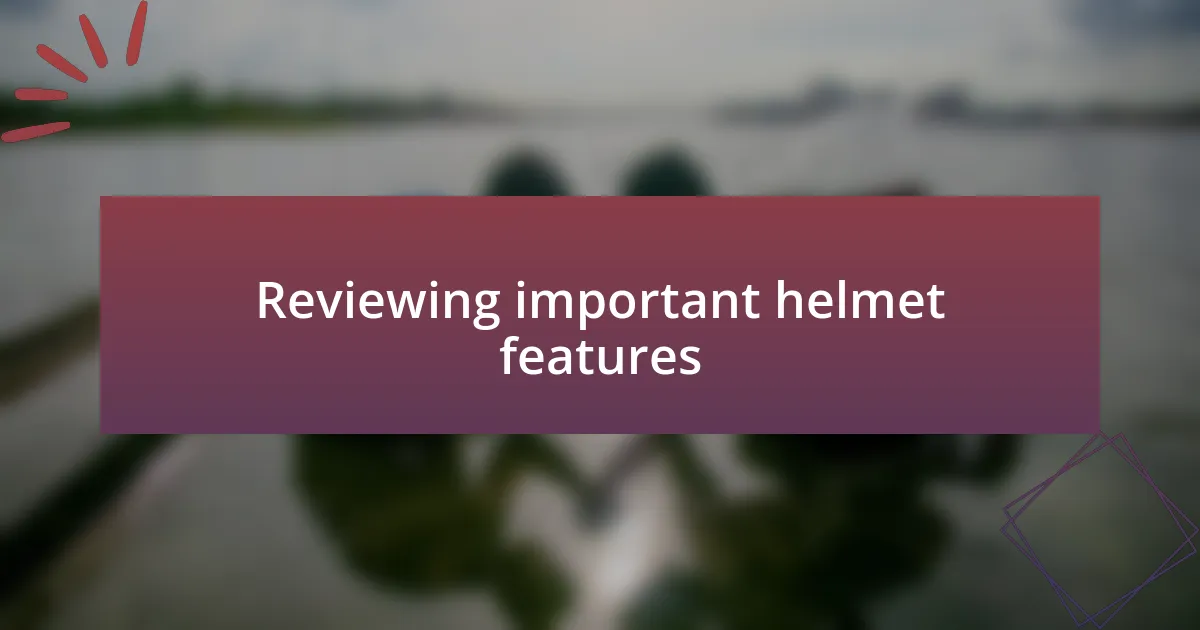
Reviewing important helmet features
When it comes to helmet features, the fit is paramount. I still recall the first time I tried a helmet that was too loose; it felt like a brain bucket rather than a safety tool! That experience taught me the value of a snug fit—one that doesn’t slide around but is still comfortable enough for long rides. It’s essential to ensure that the straps adjust well and that the helmet sits snugly just above your eyebrows without obstructing your vision.
Ventilation is another critical feature to consider. On hot summer days, nothing is worse than sweating profusely under a poorly ventilated helmet. I remember one ride where the heat was unbearable, and I wished I had chosen a helmet with better airflow. Ideal ventilation holes can make a world of difference, helping to keep your head cooler and more comfortable during long rides. This resulted in me being more alert and enjoying my ride instead of being distracted by discomfort.
Lastly, I’ve learned that safety certifications are non-negotiable. Initially, I overlooked this aspect, thinking any helmet would suffice. However, after reading stories of accidents and the importance of certifications like CPSC, I realized I needed more than just a good-looking helmet. Investing in a certified helmet provides peace of mind, knowing it has passed rigorous safety tests. Isn’t it vital that we prioritize our safety while enjoying the thrill of biking?
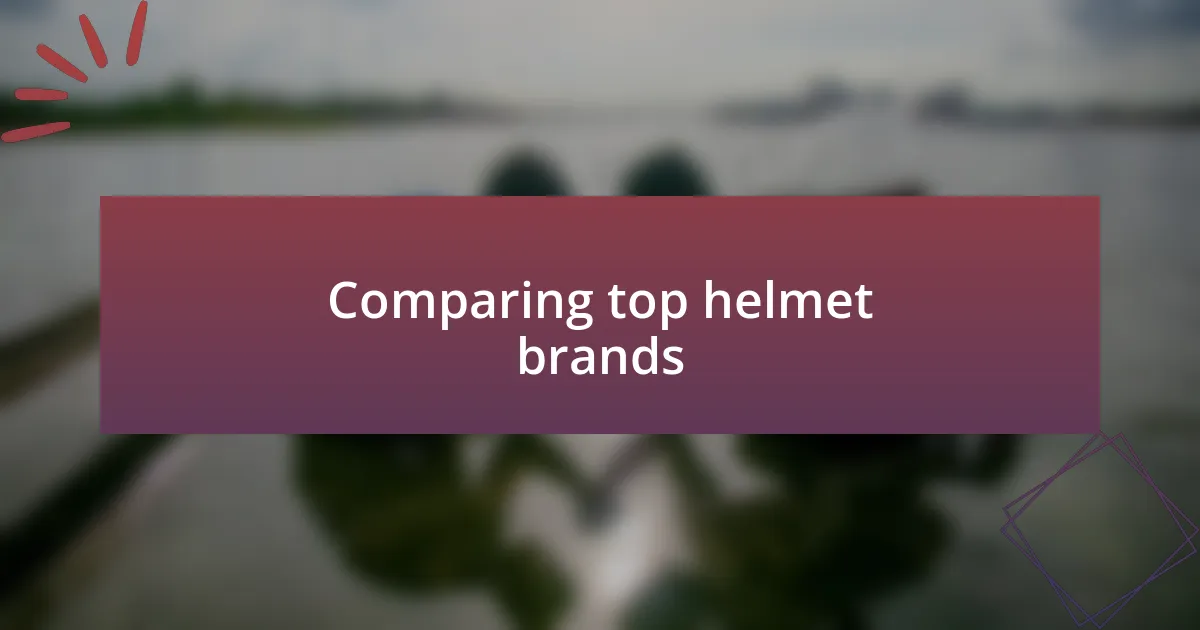
Comparing top helmet brands
When comparing top helmet brands, I’ve found that price often reflects quality, but that’s not the whole story. Brands like Giro and Bell have established themselves with excellent safety ratings and innovative features. I still remember the moment I decided to move away from a no-name brand to a well-known one; the difference in comfort and confidence was immediately noticeable.
One of the standout brands for me has been POC, known for its unique design and enhanced safety features. During a particularly challenging ride, I crashed, and my POC helmet truly impressed me with its impact absorption. It was a sobering experience, reinforcing just how critical the right brand can be—not just for comfort but for actual safety on the road.
Then we have Specialized, which not only focuses on protecting the head but also on aerodynamics and lightweight construction. I vividly recall feeling the breeze flow freely while wearing my Specialized helmet during a long uphill climb. It’s amazing how the right brand can enhance your biking experience, isn’t it? Brands can differ significantly in how they incorporate technology and functionality, which ultimately impacts your ride.

Making the final purchase decision
Making the final purchase decision can often feel overwhelming, but it’s a crucial step in ensuring your safety and comfort. I remember standing in the store, weighing the pros and cons of the helmet I’d been eyeing. After trying it on, the snug fit and sleek design made me realize that this helmet wasn’t just a safety accessory; it felt like an extension of my biking persona.
As I approached the checkout, I couldn’t shake off the feeling of uncertainty. Was I investing wisely? I decided to trust my instincts and the research I had done. Sometimes, that gut feeling combined with knowledge is what seals the deal. I left that store feeling excited, not just for the purchase, but for the confidence it gave me before my next ride.
In the end, the decision isn’t just about the helmet itself; it’s about what makes you feel secure and ready to ride. I always ask myself, “Will this helmet enhance my biking experience?” That clarity helps me make the choice that feels right. I believe we all deserve to feel both protected and empowered when we hit the road.


